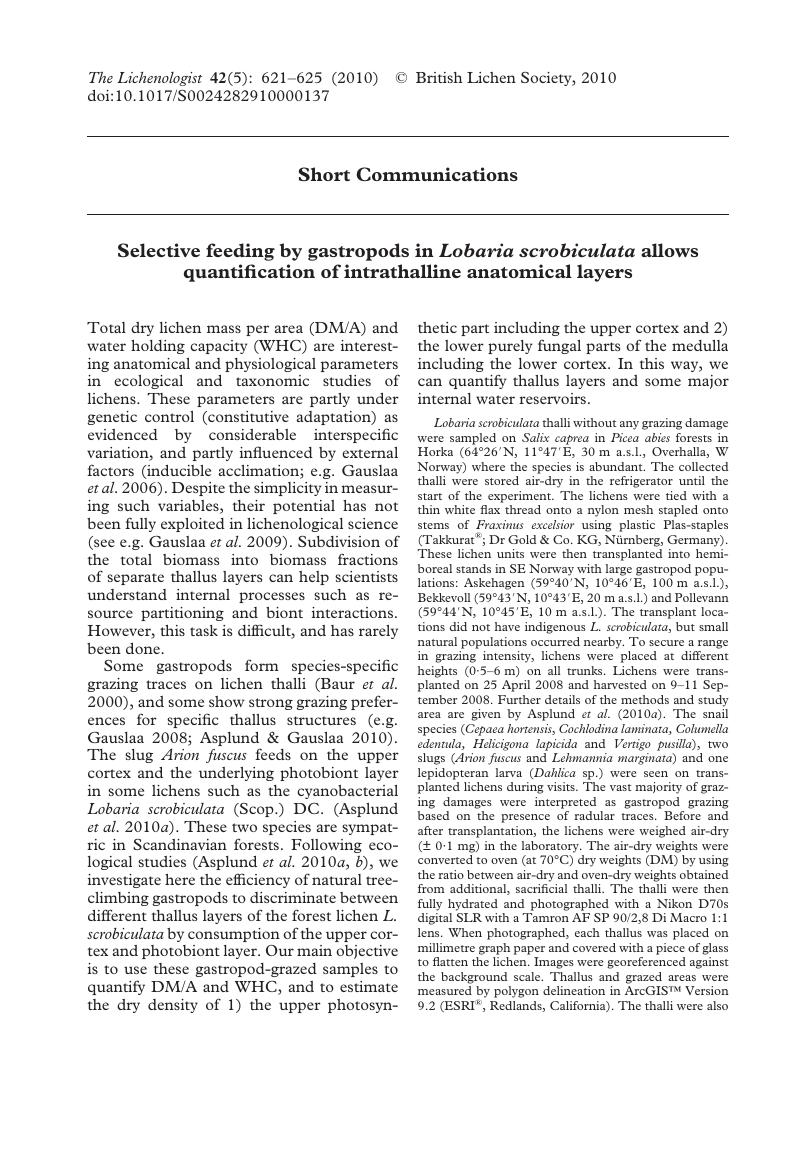Crossref Citations
This article has been cited by the following publications. This list is generated based on data provided by Crossref.
Egan, Robert S.
2011.
Recent literature on lichens—220.
The Bryologist,
Vol. 114,
Issue. 1,
p.
251.
Asplund, Johan
2011.
Snails avoid the medulla of Lobaria pulmonaria and L. scrobiculata due to presence of secondary compounds.
Fungal Ecology,
Vol. 4,
Issue. 5,
p.
356.
Gauslaa, Yngvar
and
Coxson, Darwyn
2011.
Interspecific and intraspecific variations in water storage in epiphytic old forest foliose lichens.
Botany,
Vol. 89,
Issue. 11,
p.
787.
Merinero, Sonia
Hilmo, Olga
and
Gauslaa, Yngvar
2014.
Size is a main driver for hydration traits in cyano- and cephalolichens of boreal rainforest canopies.
Fungal Ecology,
Vol. 7,
Issue. ,
p.
59.



